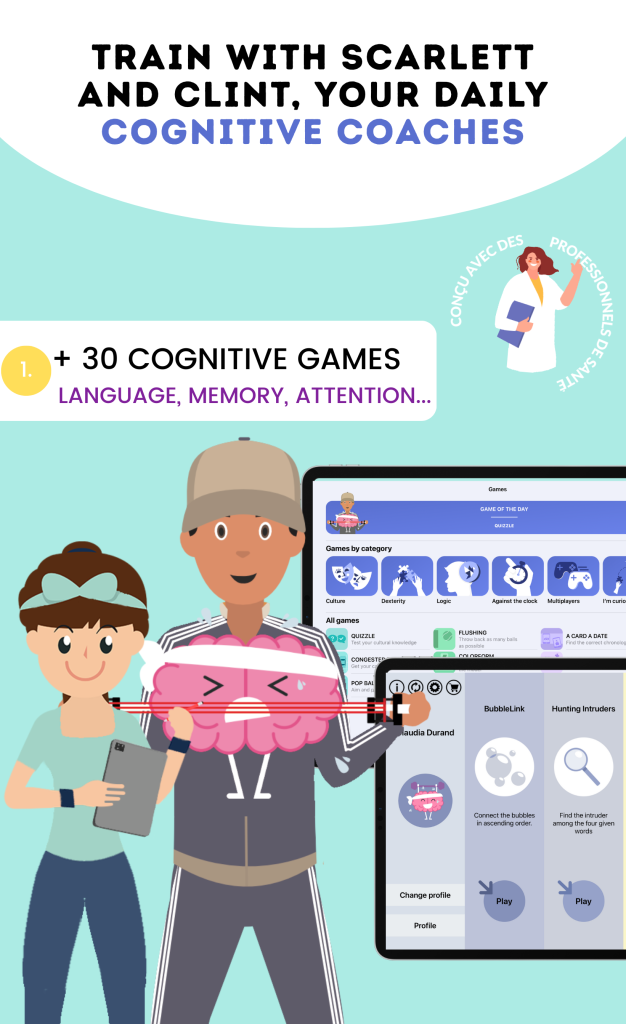Attention Deficit Hyperactivity Disorder (ADHD) is a neurodevelopmental disorder that affects many children around the world. As educators and parents, it is essential that we understand the characteristics of this disorder in order to better support students who are affected. ADHD manifests as difficulties with attention, impulsivity, and hyperactivity, which can make learning in a school environment particularly challenging.
Children with ADHD may struggle to focus on a task, follow instructions, or remain seated for long periods. This can lead to frustrations for both them and their teachers and classmates. It is also important to note that ADHD does not manifest in the same way for all children.
Some may be primarily inattentive, while others may exhibit hyperactive and impulsive behaviors. This diversity in the manifestations of ADHD underscores the need for an individualized approach in education. By understanding the nuances of this disorder, we can better tailor our teaching methods and interactions with affected students.
This also allows us to create a more inclusive and supportive learning environment where every student can thrive despite their challenges.
Summary
- ADHD is a neurodevelopmental disorder that affects attention, impulsivity, and hyperactivity in children.
- It is important to identify the specific needs of students with ADHD, such as frequent breaks or clear and concise instructions.
- Teaching methods should be adapted to include interactive activities, visual reminders, and short, varied tasks.
- The use of tools such as visual schedules, motivation charts, and time management apps can help students with ADHD.
- Collaboration between teachers, parents, and health professionals is essential to support students with ADHD and promote their academic success.
Identifying the Specific Needs of Students with ADHD
To effectively help students with ADHD, it is crucial to identify their specific needs. Each child is unique, and their challenges can vary significantly. Some students may need additional support with organization and time management, while others may require strategies to improve their focus and attention.
As educators, we must be attentive to the signals these students send and be ready to adapt our approach accordingly. This may involve regular assessments and discussions with parents to better understand the individual needs of each student. Additionally, it is essential to recognize that students with ADHD may also have particular strengths and talents.
By identifying these strengths, we can encourage them to engage in activities that they are passionate about and that allow them to shine. For example, some students may excel in creative or athletic areas, and it is important to provide them with opportunities to develop these skills. By integrating these strengths into our teaching, we can not only meet their specific needs but also boost their self-confidence and motivation to learn.
Adapting Teaching Methods for Students with ADHD

Adapting teaching methods is essential to meet the needs of students with ADHD. We must be flexible in our approach and willing to experiment with different strategies to find those that work best for each student. For example, using visual aids, such as charts or graphs, can help clarify instructions and maintain students’ attention.
Moreover, implementing regular breaks during lessons can allow students to recharge and stay focused on the task at hand. It is also beneficial to encourage active learning by integrating hands-on and interactive activities into our lessons. Students with ADHD can benefit from a kinesthetic approach that allows them to move while learning.
For instance, we can organize educational games or group projects that promote collaboration and engagement. By diversifying our teaching methods, we can create a dynamic learning environment that meets the varied needs of our students.
Using Appropriate Teaching Tools and Resources
The use of appropriate teaching tools and resources is a key element in supporting students with ADHD. We are fortunate to have access to a multitude of resources that can facilitate learning for these students. For example, our COCO THINKS and COCO MOVES app is specifically designed to meet the needs of students with disorders such as autism, ADHD, or DYS disorders.
These digital tools offer fun and engaging activities that help students develop their skills while having fun. Additionally, there are also educational resources such as books, educational games, and apps that can be integrated into our teaching. These tools can help reinforce students’ attention and concentration while making learning more appealing.
By using a variety of appropriate resources, we can create a stimulating learning environment that meets the specific needs of students with ADHD.
Encouraging Collaboration Between Teachers, Parents, and Health Professionals
Collaboration between teachers, parents, and health professionals is essential to effectively support students with ADHD. By working together, we can share our observations and experiences to develop strategies tailored to the individual needs of each student. Parents play a crucial role in this process, as they know their child well and can provide valuable insights into their behaviors and challenges at home.
Moreover, involving health professionals, such as psychologists or speech therapists, can also enrich our understanding of ADHD and help us implement appropriate interventions. These experts can offer guidance on best practices to adopt in the classroom and provide additional support to students who need it. By fostering this multidisciplinary collaboration, we can create a strong network around each student with ADHD, contributing to their academic and personal success.
Implementing Effective Classroom Management Strategies

Classroom management is a fundamental aspect of creating a positive learning environment for all students, including those with ADHD. We must establish clear and consistent rules from the beginning of the school year so that all students know what is expected of them. Furthermore, it is important to use positive reinforcement techniques to encourage appropriate behaviors.
For example, we can set up a reward system to recognize students’ efforts and achievements. It is also essential to be attentive to the non-verbal signals of students with ADHD. Sometimes, they may need additional support or a break to refocus.
By being attentive to their emotional and physical needs, we can adapt our approach in real-time to ensure they remain engaged in learning. By implementing these effective classroom management strategies, we contribute to creating an environment where all students feel valued and supported.
Training Teachers in Managing ADHD-Related Behaviors
Ongoing training for teachers is crucial to improving our understanding of ADHD and developing our skills in managing associated behaviors. As educators, we need to be informed about the latest research and practices regarding ADHD in order to adapt our teaching accordingly. Participating in webinars or specific training on the subject can help us acquire practical tools to effectively manage ADHD-related behaviors.
Additionally, it is important that we share our experiences among colleagues to learn from one another. Creating a professional network where we can discuss the challenges faced with our students with ADHD can foster a rich exchange of ideas and strategies. By investing in our ongoing training, we strengthen our ability to support these students while creating a more inclusive school environment.
Fostering an Inclusive and Caring Environment for Students with ADHD
Finally, it is essential that we foster an inclusive and caring environment for all our students, including those with ADHD. This starts with promoting a school culture that values diversity and encourages empathy among students. By raising awareness in our classes about the challenges faced by their peers with ADHD, we can help reduce stigma and foster an atmosphere of acceptance.
We must also ensure that every student feels supported in their educational journey. This may involve setting up mentoring programs or collaborative activities that encourage peer support. By creating an environment where every student feels valued and respected, we contribute not only to their academic success but also to their emotional well-being.
In summary, our commitment to inclusive education is essential to enable all our students to reach their full potential.
Communication Strategies with Students with ADHD
Effective communication is essential to support students with ADHD. By adopting appropriate communication strategies, we can improve their understanding and engagement. Here are some approaches to consider:
- Use clear and simple language: Avoid complex sentences and favor short, precise instructions.
- Repeat key information: Repetition helps reinforce understanding and memorization of instructions.
- Encourage questions: Create an environment where students feel comfortable asking questions to clarify their doubts.
- Use visual aids: Complement your explanations with images, graphs, or charts to facilitate information assimilation.
Integrating Parents into the Educational Process
Parents play a crucial role in supporting students with ADHD. Their involvement can improve continuity between school and home. Here are some ways to integrate parents:
- Organize regular meetings: Hold meetings to discuss the student’s progress and the strategies in place.
- Provide resources: Share articles, books, or tools that can help parents better understand ADHD.
- Encourage open communication: Create communication channels for parents to easily share their concerns and observations.
- Involve parents in school activities: Invite them to participate in projects or events, thus fostering a strong link between school and home.
The Benefits of Physical Exercise for Students with ADHD
Physical exercise plays an important role in managing ADHD symptoms. It can help improve concentration, reduce anxiety, and promote better behavior. Here are some benefits of exercise:
- Improved concentration: Physical activity stimulates blood circulation and oxygenation of the brain, which can enhance concentration.
- Reduction of anxiety: Exercise releases endorphins, helping to reduce stress and anxiety in students.
- Development of social skills: Participating in group sports activities promotes social interaction and teamwork.
- Mood regulation: Regular exercise can help stabilize mood and decrease impulsive behaviors.
Complementary Therapeutic Approaches for ADHD
In addition to educational methods, certain therapeutic approaches can help manage ADHD symptoms. Here are some of the most common therapies:
- Behavioral therapy: This approach helps students develop skills to manage their behaviors and emotions.
- Mindfulness and meditation: Mindfulness techniques can help improve concentration and reduce stress.
- Play therapy: Used for young children, it allows them to express emotions and develop social skills through play.
- Nutrition interventions: A balanced diet can also play a role in managing ADHD symptoms.





